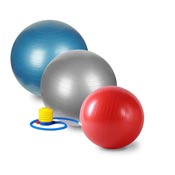The fitness industry is filled with weight loss myths. Quick fixes and toxic advice inundate the media and make it hard to build a weight loss plan that is evidence-based and effective long term.
Rest assured, if you’re looking to shed a few pounds, the tips below are research-backed and will help you achieve the long-term weight loss results you’re looking for.
1. Exercise Consistently
Exercise plays a role in helping you shed and maintain weight, by increasing your daily caloric burn. Consistent exercise will keep your calorie burn up, and help contribute to your weight loss efforts.
The key to being consistent is choosing activities you like to do. Running may burn a high number of calories, but if you can’t bring yourself to do it, it’s not going to be very effective at helping you lose weight. When it comes to gaining consistency, it matters less what the specific activity is, and more that you’re doing it regularly.
Activities you enjoy may not look like traditional forms of exercise, although cycling, running, rowing, and stepping are great for burning calories! You could join a rock-climbing gym, play basketball in the park with your friends, or go on regular walks with your family after dinner each night. Whatever exercise you choose, find what works for you, and stick with it!
2. Follow a Specific Workout Routine
While each person’s workout routine can and should vary depending on their preferences, a mix of cardio and strength training is key for a well-balanced, and effective weight loss plan.
Cardio is great for your cardiovascular health, burning calories, and boosting your mood. While strength training will help you build lean muscle mass which will help increase your metabolism, burning calories at a higher rate even when you’re not exercising.
Cardio for Weight Loss
According to the Physical Activity Guidelines from the Department of Health & Human Services, healthy adults should complete a minimum of 150 minutes of moderate-intensity cardio (30 minutes, 5 days a week), or 75 minutes of vigorous-intensity cardio (25 minutes, 3 days a week) or an equivalent combination of the two.
But if we’re aiming for weight loss, we may want to up the ante with 2-3 days of moderate-intensity cardio, and 2 days of vigorous-intensity cardio such as HIIT training or Tabata which will challenge your body, and work overtime to burn calories even after your workout session is over!
Not sure where to start? Check out our Cardio Workout Collection on YouTube for free workout videos!
Strength Training for Weight Loss
When it comes to strength training, 2-3 days a week is a great place to start. Try including full body (compound) exercises that get lots of muscles involved at once. The more muscles working means more calories burned during your workout.
You can increase your calorie burn during resistance training sessions by completing exercises in a circuit with minimal rest in between exercises, resting for 60-90 seconds once you’ve made it through all of your exercises, and repeating the circuit for 2-3 sets.
Be sure to check out our Strength Training Collection for simple strength workouts you can do at home.
Example Week
Below is an example routine of how a week of exercise might look, with the above suggestions plugged in. While it may be more than you’re doing now, there are 2-3 rest days included, with 4-5 days of exercise. How you want to break them up is up to you, just make sure you give muscle groups 48 hours of rest between resistance training sessions and vigorous cardio sessions.
Day of the Week |
Exercise |
Sunday |
Rest |
Monday |
30-min Moderate Cardio & Full Body Workout |
Tuesday |
25-min Vigorous Cardio |
Wednesday |
Rest |
Thursday |
30-min Moderate Cardio & Full Body Workout |
Friday |
25-Min Vigorous Cardio |
Saturday |
(optional) 30-min Moderate Cardio & Full Body Workout OR Rest |
3. Achieve a Caloric Deficit
It’s important to understand that adding exercise alone to your daily routine won’t directly lead to weight loss. While exercise burns calories, it won’t help you lose weight if you are still consuming more or the same number of calories you’re burning throughout the day.
It all comes down to the classic “calories in vs. calories out” equation. If you consume more calories than you burn, you’ll gain weight; if you consume the same as you burn, you’ll maintain; and finally, if you consume less than you burn, you’ll lose weight. Consuming fewer calories than you burn is called being in a caloric deficit - and it’s the key to any effective weight loss plan.
For most people, the best approach to achieving a caloric deficit is going to be a combination of exercise and modest calorie restriction. This is where counting calories comes in. If you’re a numbers person, this is where you’ll shine, for the rest of you, I promise once you get started it isn’t as bad as it sounds. To start, calculate your total daily energy expenditure (TDEE).
From here, you can subtract the number of calories daily from your TDEE to ensure you’re on track for losing your goal weight each week. Let’s say you wanted to lose 1 pound each week. 1 pound is equivalent to 3500 calories. In order to achieve a caloric deficit of 3500 calories throughout the week, you would need to be in a caloric deficit of 500 calories each day. Whether that’s achieved through exercise, diet, or a combination of the two is up to you!
Remember, exercise or counting calories alone will not lead to weight loss. Counting your calories will help you understand how many calories you’re both eating and burning throughout the day. Using that information to help build a strategy around reducing your calorie intake and/or increasing your calories burned is what will provide the best path towards consistent, long-term weight loss.


Other blog articles you may enjoy:


























